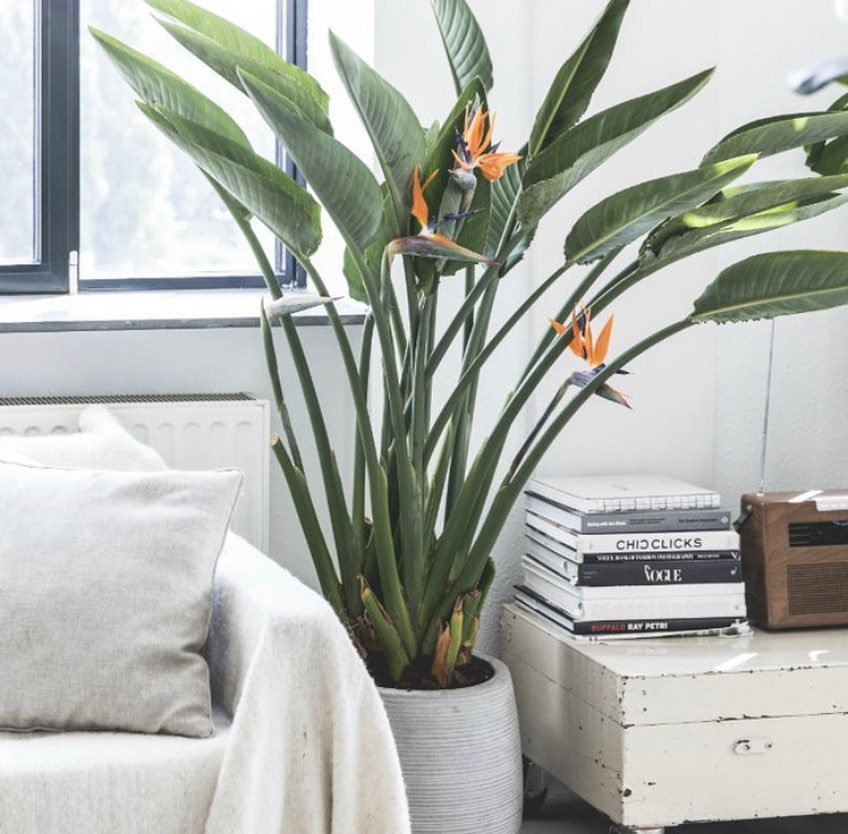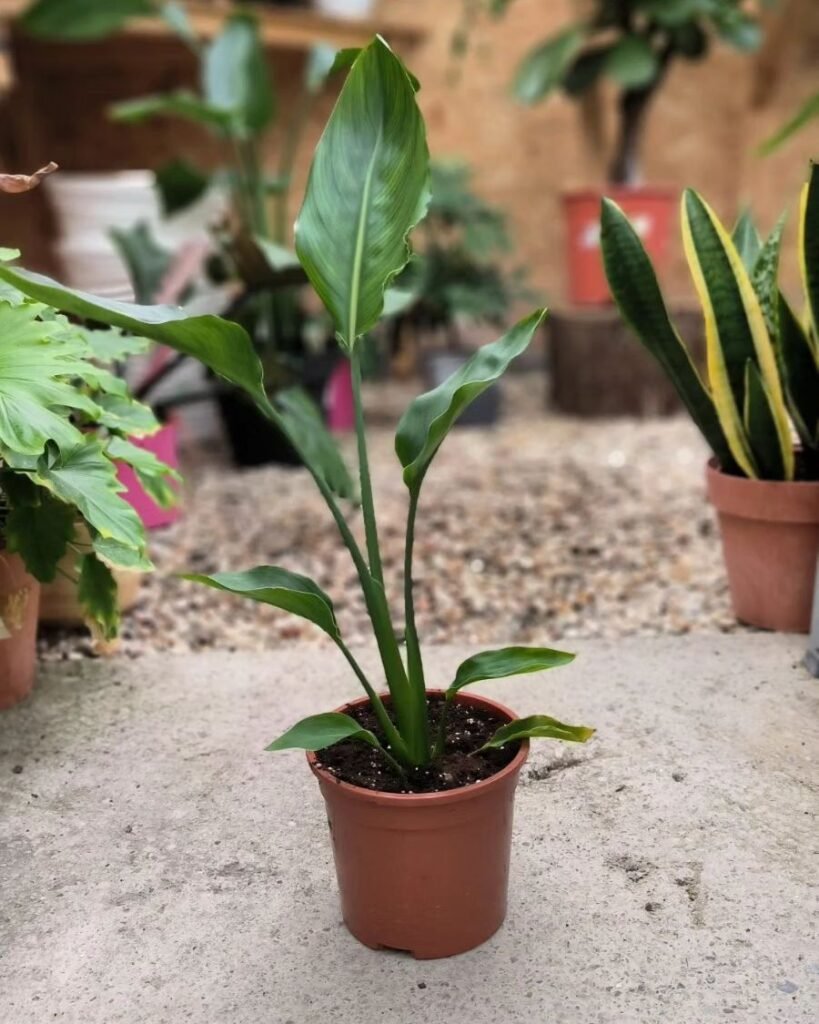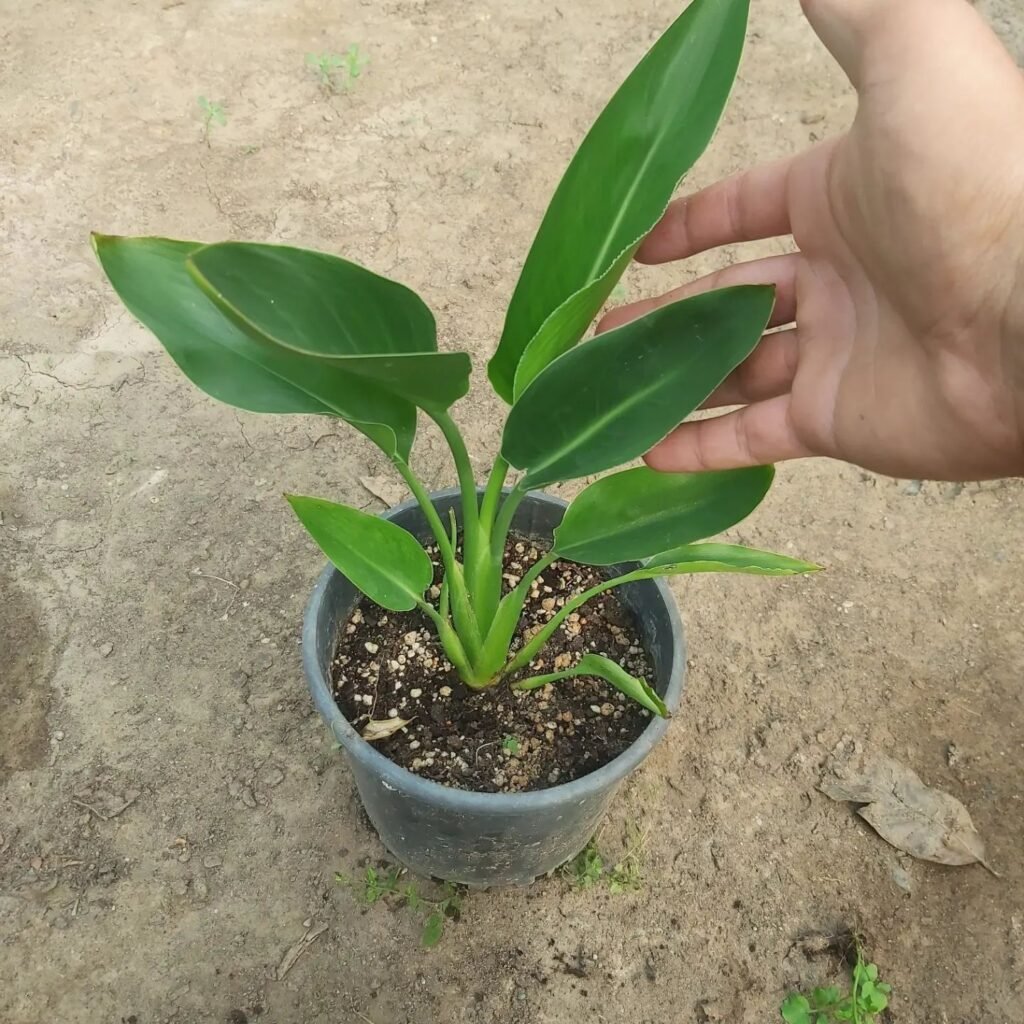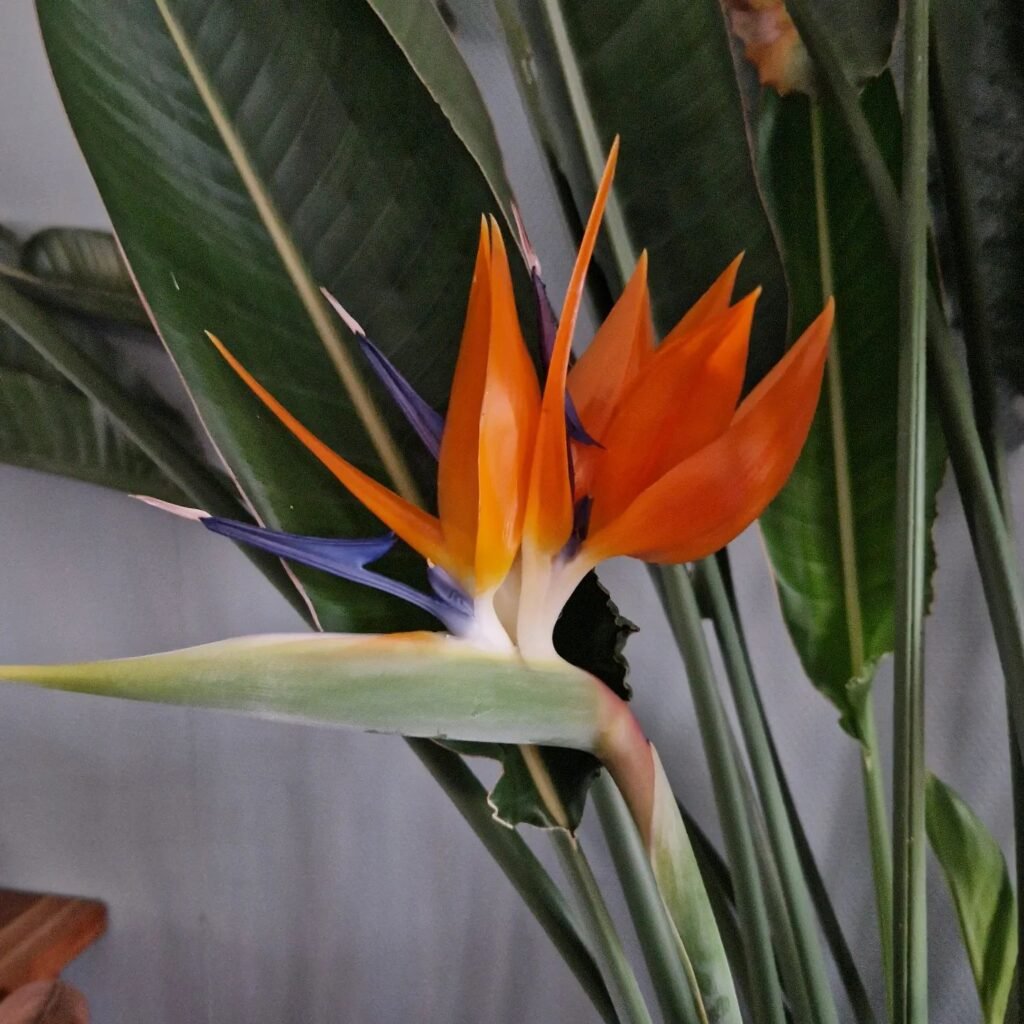Welcome to my article where I will provide essential care tips for growing Strelitzia reginae, commonly known as the bird of paradise plant, in UK gardens. If you’re looking to add a touch of exotic beauty to your garden and create a tropical allure, then Strelitzia reginae is the perfect choice. With its vibrant and striking orange and blue flowers, this plant is sure to bring a sense of allure and wonder to your outdoor space.
Whether you have a tropical garden or want to incorporate indigenous plants into your existing landscape, Strelitzia reginae is a fantastic option. Not only does it produce stunning flowering results, but it also adds a splash of color and elegance to any garden. The beauty of Strelitzia reginae lies in its ability to thrive in the UK climate, allowing you to enjoy its exotic flowers without the need for a tropical paradise.
Throughout this article, I will guide you through the essential care tips for ensuring the health and beauty of your Strelitzia reginae. From providing the right amount of sunlight to watering and fertilizing, I will cover all the necessary information to help your bird of paradise plant thrive. Whether you’re a seasoned gardener or a beginner, these care tips will set you on the path to success.
Appearance of Strelitzia Reginae


Strelitzia Reginae, affectionately known as the Bird of Paradise, is a truly spectacular plant that brings a vibrant splash of the tropics into any setting. Known for its stunning, crane-like flowers, Strelitzia Reginae mesmerises with a dazzling display of orange and blue petals that evoke the image of an exotic bird in flight. These remarkable blooms emerge from a clump of glossy, paddle-shaped leaves, adding a dramatic flair to the plant’s overall appearance.
Growing to a manageable height of around 2 meters, Strelitzia Reginae fits beautifully in both garden beds and as an indoor feature, making it a versatile choice for those looking to infuse their spaces with a touch of the exotic. Its ability to bloom with such extraordinary flowers, often during the late winter to early spring, offers a captivating visual treat when most plants are yet to awaken from their winter dormancy.
In my experience, Strelitzia Reginae not only serves as a focal point of any garden or room but also symbolises a piece of paradise, bringing with it a sense of wonder and an air of the wild. Its lush foliage and breathtaking flowers offer a year-round display of natural beauty, making it a beloved addition to any plant collection.
 Strelitzia Reginae, also known as the Bird of Paradise Plant, can live over 50 years, making it a long-lasting companion for your garden or home. Its durability and perennial nature symbolise loyalty and longevity, adding not just beauty but also a story to your space.
Strelitzia Reginae, also known as the Bird of Paradise Plant, can live over 50 years, making it a long-lasting companion for your garden or home. Its durability and perennial nature symbolise loyalty and longevity, adding not just beauty but also a story to your space.
Difference Between Strelitzia Reginae and Strelitzia Nicolai


While both Strelitzia reginae and Strelitzia nicolai belong to the same genus, they have distinct differences in terms of their appearance and growth habits. Strelitzia reginae, also known as the bird of paradise plant, is smaller in size and is primarily cultivated for its vibrant flowers. With its bold orange and blue blooms, it adds a stunning pop of color to any garden or indoor space.
On the other hand, Strelitzia nicolai, commonly referred to as the giant white bird of paradise, is much larger and is mainly grown for its impressive foliage. It features enormous emerald green leaves that can reach up to 10 meters in height. The lush foliage of Strelitzia nicolai creates a sense of grandeur and adds a touch of tropical elegance to any landscape.
Both Strelitzia reginae and Strelitzia nicolai can bring a tropical feel to your garden or indoor space, but it’s important to consider their specific characteristics when choosing which one to cultivate. Strelitzia reginae will delight you with its vibrant flowering display, while Strelitzia nicolai will captivate with its majestic and dramatic foliage. Select the plant that best suits your aesthetic preferences and space requirements to create your own tropical oasis.
Light Requirements for Strelitzia Reginae (Bird of Paradise Plant)


Strelitzia reginae, also known as the bird of paradise plant, thrives in bright, sunny conditions. To ensure its healthy growth and vibrant flowering, it requires at least four to six hours of direct sunlight or bright light indoors each day.
If you’re growing Strelitzia reginae indoors, place it in a south-facing room, bright bathroom, or conservatory where it can receive ample sunlight. These locations provide the necessary light exposure for the plant’s optimal development.
Avoid placing the bird of paradise plant too close to windows or hot radiators. This can cause stress to the plant and may prevent proper flowering. Maintaining an appropriate distance from heat sources will help keep the plant healthy and thriving.
Sun Exposure Tips:
- Ensure your Strelitzia reginae receives at least four to six hours of direct sunlight or bright light per day.
- If growing indoors, position your plant in a south-facing room, a bright bathroom, or a conservatory.
- Avoid placing the plant too close to windows or hot radiators, as excessive heat can be detrimental.
“Proper light exposure is crucial for the successful cultivation of Strelitzia reginae, allowing it to flourish and produce its stunning flowers.”

Watering Tips for Strelitzia Reginae


Proper watering is crucial for the health and vitality of your Strelitzia reginae, also known as the bird of paradise plant. It’s important to ensure that the soil moisture levels are maintained at an optimal level throughout the plant’s growth cycle.
To keep your Strelitzia reginae thriving, follow these watering tips:
- Consistently moist soil: During the active growth period in spring and summer, it is important to keep the growing medium consistently moist. This means providing enough water to prevent the soil from drying out. However, be cautious not to overwater, as this can lead to waterlogged soil and root rot.
- Dry soil between waterings: Allow the top inch of the soil to dry out before watering again. You can check the soil moisture level by gently inserting your finger into the soil. If the soil feels dry to the touch, it’s time to water your Strelitzia reginae.
- Reduce watering in autumn and winter: During the rest period in autumn and winter, reduce watering and allow the soil to dry out more thoroughly. This mimics the plant’s natural dormancy cycle and helps prevent overwatering during the cooler months.
Keep a close eye on your Strelitzia reginae’s leaves for any signs of watering issues. Curling, splitting, or browning leaves can indicate inadequate or excessive watering. Adjust your watering schedule accordingly to ensure that your bird of paradise plant thrives in optimal conditions.

Fertilizing and Soil for Strelitzia Reginae (Bird of Paradise Plant)


Fertilizing is vital for the optimal growth and flowering of the Strelitzia reginae, commonly known as the bird of paradise plant. During the spring and summer months when the plant is actively growing, I recommend using a balanced indoor fertilizer. Popular options like Baby Bio or Happy House provide the necessary nutrients for healthy development. Remember to follow the recommended dosage on the fertilizer packaging to avoid overfeeding, which can harm the plant.
When it comes to soil, Strelitzia reginae prefers a loam-based potting soil with good drainage. Opting for a well-draining soil mix prevents waterlogging, which can have negative effects on the plant’s root system. Providing the right soil conditions ensures that the Strelitzia reginae thrives and remains healthy in its environment.

Pruning and Maintenance for Strelitzia Reginae


Pruning the Strelitzia reginae, commonly known as the Bird of Paradise, is a straightforward task that plays a vital role in maintaining the plant’s aesthetic and promoting healthy growth. The primary pruning activity involves the removal of spent blooms and flower stalks in spring. Employ clean gardening shears to snip them off as close to the base as possible, which encourages new growth and prevents the plant from expending energy on seed production.
Additionally, the care of Strelitzia reginae includes eliminating wilted or yellowing leaves throughout the year. This practice not only keeps the plant looking neat but also enables it to focus its resources on developing strong, healthy growth. It is crucial, however, to refrain from cutting away healthy leaves unless absolutely necessary, as doing so could adversely affect the plant’s growth and overall appearance.
When cutting leaves, aim to make the cut at a 45-degree angle near the base, ensuring the central rib of the leaf stem is left slightly longer. This technique ensures your Strelitzia reginae remains tidy and minimizes potential harm to the plant.
Adopting a routine of regular pruning and maintenance for your Strelitzia reginae care regimen will help keep this exquisite plant in prime condition, making it an eye-catching feature in your garden or indoor setting.

Propagating Strelitzia Reginae
Propagating Strelitzia reginae, commonly known as the Bird of Paradise, can be achieved through two main methods: division and potting up offsets.
Division: To propagate by division, first gently remove the plant from its pot. Then, carefully split the root ball into sections, making sure each part has plenty of roots. After dividing, repot each section into its own pot, providing them with the right conditions to flourish.
Potting up offsets: Strelitzia reginae frequently produces offsets at its base, which can be carefully detached from the main plant and potted on their own. As these offsets develop their own root systems, they’ll grow into new, independent plants, allowing you to increase your collection.
Propagating Strelitzia reginae offers a rewarding way to grow your plant family and share the stunning beauty of the Bird of Paradise with friends and fellow gardeners. Whether opting for division or potting up offsets, it’s important to give your newly propagated plants the proper care and attention they need to thrive.

Bird of Paradise (Strelitzia Reginae) Toxicity to Cats
It’s important to note that Strelitzia reginae, or bird of paradise plant, is toxic to cats if ingested. The plant contains specific compounds that can cause gastrointestinal distress, drooling, vomiting, and other adverse reactions in cats. Therefore, if you have a cat, it’s advisable to keep the plant out of their reach or consider choosing non-toxic alternatives for your indoor or outdoor garden. Creating a safe environment for your pets is crucial, and being aware of the potential toxicity of certain plants is an essential part of responsible pet ownership.
Strelitzia Reginae Pests and Diseases
Strelitzia reginae, commonly known as the bird of paradise plant, is generally a resilient plant that can withstand various growing conditions. However, like any plant, it can still be susceptible to pests and diseases. Here are some common issues to watch out for and tips on how to care for your Strelitzia reginae:
Pests
Common pests that may affect Strelitzia reginae include mealybugs and spider mites. These pests can cause damage to the plant by sucking sap from the leaves and stems. To control these pests, consider using organic insecticides based on plant oils or fatty acids. Regularly inspect your plant for any signs of infestation, such as webbing or small, cotton-like clusters on the leaves. If you detect any pests, take appropriate actions to eliminate them and prevent further spread.
 The Bird of Paradise, or Strelitzia Reginae, is named for its stunning blooms that mimic a colourful bird mid-flight. It’s not just a visual treat but also vital for birds, offering nectar. This plant brings a slice of the tropics and artistic beauty to any environment.
The Bird of Paradise, or Strelitzia Reginae, is named for its stunning blooms that mimic a colourful bird mid-flight. It’s not just a visual treat but also vital for birds, offering nectar. This plant brings a slice of the tropics and artistic beauty to any environment.
Diseases
Strelitzia reginae is relatively resistant to diseases. However, it can still develop problems, especially if proper care is not provided. Overwatering can lead to root rot or fungal diseases, so it’s important to maintain proper watering practices. Allow the soil to dry out slightly between waterings and ensure good drainage to prevent excess moisture. Additionally, Strelitzia reginae can be sensitive to extreme cold temperatures. If you live in an area with frost, provide adequate protection by covering the plant or moving it indoors during cold spells.
By regularly inspecting your Strelitzia reginae for pests and diseases and taking appropriate preventative measures, you can ensure the health and vitality of your bird of paradise plant. Remember to maintain proper watering practices and provide suitable protection from extreme temperatures to keep your Strelitzia reginae thriving.
Helpful Videos about Growing Strelitzia Reginae
Getting into growing Strelitzia reginae, or the Bird of Paradise? We’ve got some cracking videos lined up for you. They’re packed with straightforward advice on giving your plant the best start, covering everything from the basics to a few clever tricks. Ideal for both green-fingered experts and those new to the plant game, these guides are all about making Strelitzia reginae care easy and enjoyable.
- Complete Guide to Strelitzia Reginae: How to Care for “Bird of Paradise” Flower
- Bird of Paradise (Strelitzia Reginae) Care And Growing Guide – Plant Mom Care
Hope these vids help you get your Strelitzia reginae looking lush and lovely. With a bit of care and patience, it’ll be the star of your space in no time. Happy planting!
Frequently Asked Questions about Strelitzia Reginae (the Bird of Paradise)

Curious about nurturing your Strelitzia Reginae? Dive into my comprehensive FAQ for expert tips on flourishing your Bird of Paradise. Whether it’s optimal sunlight, watering techniques, or general care, I’ve compiled everything you need for a thriving plant.
Strelitzia Reginae, commonly known as the Bird of Paradise, is a vibrant, tropical plant known for its unique, bird-like flowers and broad leaves.
Water once the top layer of soil becomes dry, usually every week, but less frequently in winter. Ensure good drainage to prevent root rot.
It thrives in bright, indirect sunlight. In the UK, a south-facing window is ideal for indoor gardens.
With adequate light and care, it can bloom from late winter through to early spring. Flowering is more common in mature plants.
Yes, but only in summer months. It should be brought indoors or protected when the temperature drops below 10°C.
A well-draining potting mix is essential. You can use a general-purpose mix with added perlite or sand for better drainage.
Repot every 2-3 years in spring. Choose a pot that’s slightly larger than the current one to accommodate root growth.
Yes, it can be toxic if ingested by pets, causing nausea and vomiting. Keep it out of reach from cats and dogs.
Ensure it gets enough light, don’t overwater, and use a phosphorus-rich fertiliser during the growing season to encourage blooms.
Leaf splitting is natural and mimics the plant’s response to windy conditions in its native habitat, allowing light to pass through to lower leaves.
Yes, but it requires patience. Germination can take anywhere from 1 to 3 months, and flowering may take up to 5 years or more.
Yellowing leaves can be a sign of overwatering, poor drainage, or a nutrient deficiency. Check watering practices and soil condition.
Remove any dead or damaged leaves at their base to encourage new growth and maintain the plant’s appearance.
Indoors, it can reach up to 1.5 to 2 metres tall, depending on the pot size and growing conditions.
While it prefers higher humidity, Strelitzia Reginae is relatively tolerant of indoor environments. Misting or a pebble tray can help increase humidity around the plant.
Inspect regularly for signs of pests like spider mites or scale. Treat infestations early with insecticidal soap or neem oil.
It prefers warmer temperatures, ideally between 18°C and 24°C, and should be protected from drafts and sudden temperature drops.
While it can survive in low light, it’s unlikely to flower and its growth will be stunted. Bright, indirect light is best.
I hope this clears up how to care for your Strelitzia Reginae. If you have any more questions, feel free to drop them in the comments, and I’ll be sure to answer. Remember, everyone starts somewhere, and learning about your plants is a rewarding journey.

